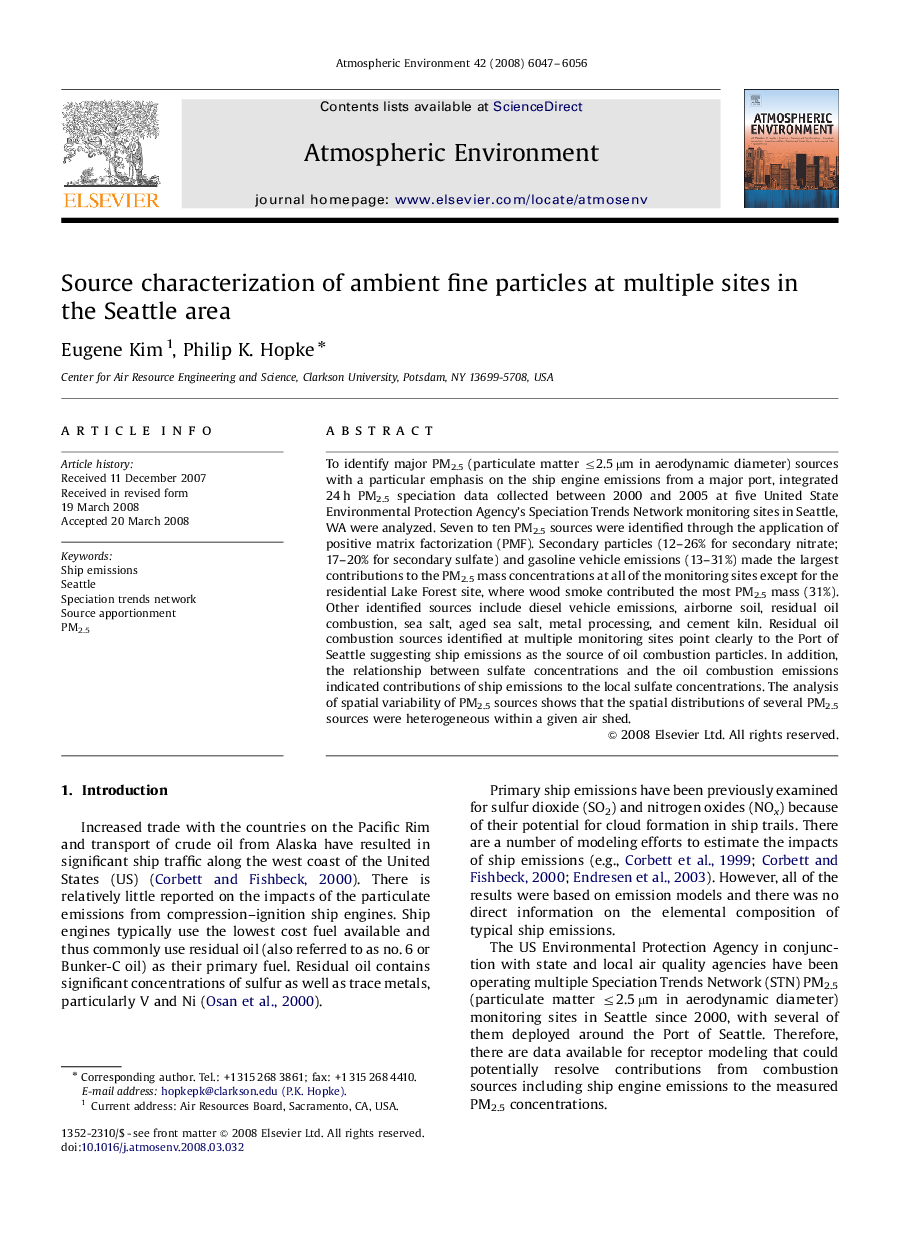| Article ID | Journal | Published Year | Pages | File Type |
|---|---|---|---|---|
| 4442765 | Atmospheric Environment | 2008 | 10 Pages |
To identify major PM2.5 (particulate matter ≤2.5 μm in aerodynamic diameter) sources with a particular emphasis on the ship engine emissions from a major port, integrated 24 h PM2.5 speciation data collected between 2000 and 2005 at five United State Environmental Protection Agency's Speciation Trends Network monitoring sites in Seattle, WA were analyzed. Seven to ten PM2.5 sources were identified through the application of positive matrix factorization (PMF). Secondary particles (12–26% for secondary nitrate; 17–20% for secondary sulfate) and gasoline vehicle emissions (13–31%) made the largest contributions to the PM2.5 mass concentrations at all of the monitoring sites except for the residential Lake Forest site, where wood smoke contributed the most PM2.5 mass (31%). Other identified sources include diesel vehicle emissions, airborne soil, residual oil combustion, sea salt, aged sea salt, metal processing, and cement kiln. Residual oil combustion sources identified at multiple monitoring sites point clearly to the Port of Seattle suggesting ship emissions as the source of oil combustion particles. In addition, the relationship between sulfate concentrations and the oil combustion emissions indicated contributions of ship emissions to the local sulfate concentrations. The analysis of spatial variability of PM2.5 sources shows that the spatial distributions of several PM2.5 sources were heterogeneous within a given air shed.
